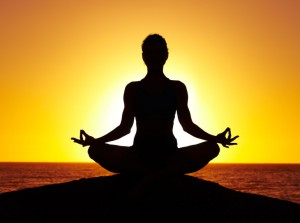Ashok Kumar Malhotra- Faculty Columnist
While teaching my class on yoga and meditation I emphasized that for maximum benefit, yoga/meditation exercises should be practiced for at least five to ten minutes each day. This practice should also be continued for a long time. A curious student asked me to explain the outcome of this daily practice. I clarified this notion of practice to be carried on continuously through an example from my childhood.
When I was growing up in a small town in India, a body builder lived a couple of blocks from our house. Not only did he build a chiseled body through daily exercises, but also could perform a miraculous act each month by lifting an entire cow with his two hands. On the last Sunday of each month, he showed this spectacular lifting act to the entire community.
As people assembled around the arena, the body builder would come out of his room looking like Hercules, dressed in his white loin cloth. He would walk straight towards the audience, greeting all while shaking hands with a few.
When he stood in front of the cow, he would touch the ground with a prayer to almighty god. Then he would bend down to his knees, and while putting both hands firmly on the cow’s tummy, he would lift the entire cow in one jolt.
As we watched this amazing feat, the entire crowd would give a big applause. The ease with which he lifted the cow was equal to the ease with which he brought the cow back down to its four feet on the ground.
With an admiring look, I always wondered how strong he must have been to pick up this mammoth animal with such an effortless action.
On our asking about this miraculous act, the body builder said with a simple smile, “It is really easy if you practice lifting on a daily basis. I have been lifting this cow from the first day it was born—each day for two years. Since I have been practicing lifting each day for 730 days, my daily practice has paid off. I do not exert myself and can lift this cow with great ease. It is all because of my daily practice, done each day continuously for a long time.”
When my students heard this story, they were able to grasp yoga’s emphasis on continuous practice as the key to success.
Caution: The meditation exercise listed below is presented as a suggestion only. When done correctly, it might be helpful in reducing stress.
Meditation with the Mantra SO HUM:
While sitting in the easy posture, close your eyes. Become aware of breathing in and out. As you breathe in, think about the sound “so.” As you breathe out, think about the sound “hum.” If other ideas come through your mind, recognize them and then set them aside. Do not be side-tracked by them! Go back to breathing in ‘so’ and breathing out “hum.” Keep your mind on “so” “hum.” Continue your meditation with “so” “hum” for two minutes. After you have completed this process, go back to your normal breathing. During the first few weeks of meditation with “so” “hum”, spend two to four minutes on this exercise. As you start feeling comfortable with the use of this sound, increase the time to three to five minutes and practice it for another two weeks. Do this exercise in the morning after waking up and in the evening before going to sleep. Other mantras that can be used to develop meditation skills are “hum so” and “AUM.”
Dr. Ashok Kumar Malhotra is SUNY Distinguished Teaching Professor of Philosophy and founder of the Yoga and Meditation Society at SUNY Oneonta. As a service to the community, his program on “Yoga for Relaxation” is shown at 9 a.m. every Saturday on the Public Access Channel 23 and is also available on YouTube. His articles are condensed from his books on “An Introduction to Yoga Philosophy,” *“Journal of Yoga and Meditation Now,” “Transcreation of the Bhagavad Gita,” *“Wisdom of the Tao Te Ching,” *“Instant Nirvana,” and *“Sartre and Yoga.” These books are available through www.amazon.com and the starred ones as eBooks through [email protected] and Kindle. He gives away all his royalties from his sixteen books to the Ninash Foundation (www.ninash.org) that builds schools for female and minority children of India. 
Leave a Reply